To choose the best cultivator, you need to know about the important characteristics of these devices and have an idea. on how their preferred types relate to the area and relief of the site for which they are purchased. We will talk about this further, as well as analyze the 8 best cultivator models and answer the most popular questions.
CONTENT
- 1 What are cultivators?
- 2 What are the advantages of cultivators? Who needs them?
- 3 What to focus on when choosing
- 4 Top products
- 5 Comparative table of the best cultivators
- 6 Frequently asked Questions
What are cultivators?
These are tools or machines (when equipped with a motor) for loosening the soil, controlling weeds, hilling and performing other tasks related to cultivation.
What are the advantages of cultivators? Who needs them?
Cultivators are used by gardeners and gardeners. They greatly facilitate plowing and loosening the land, and some models also allow you to hilling, cutting furrows, and so on. Therefore, they are widespread - this is one of the most important devices for everyone working with the earth.
What to focus on when choosing
To choose the best cultivator, you need to take a closer look at the characteristics of the proposed devices - the view will be important (they are divided into manual, electric and gasoline), power, if the cultivator is equipped with an engine - its type, gearbox, and so on Further.
We will analyze all these characteristics in more detail later. But before delving into these details, here are some general recommendations for choosing a cultivator:
First, you should determine how large the area you want to treat. If the plot is small, that is, it does not exceed 40 acres, then it is enough to purchase a light cultivator. For plots with an area of up to 100 acres, an average one will be required, and with an even larger area, a heavy one is better suited. But medium and heavy devices are usually not suitable for weeding, so an ultra-light cultivator is often purchased for this purpose as well.
It is also important whether you will need to perform other tasks in addition to the main one. If it is necessary to use the device for specific tasks, then this can greatly narrow the choice, since not every cultivator is adapted to perform them.
Another factor that should be taken into account is the relief of the site. If its landscape is difficult, with large angles of inclination, you should choose a device designed to work in such conditions - many cultivators will not be effective at angles greater than 15-20 °.
Views
All cultivators can be divided into two broad categories - manual and automatic. The latter, in turn, are divided into those equipped with a gasoline and electric engine.
The manual ones are the simplest. The work is carried out by the efforts of the person himself, and this has both its pros and cons. The advantages of handheld devices include:
- low cost;
- ease of use;
- small dimensions and weight, which means a high level of mobility;
- they do not require fuel and maintenance of mechanisms.
The disadvantages are as follows:
- low productivity;
- can be used only in small areas;
- they cannot be used to cultivate virgin lands.
The listed disadvantages are unusual for automatic cultivators, although they have their own. Electric models have such advantages as:
- light weight in comparison with gasoline;
- productivity is much higher than manual;
- do not pollute the environment;
- easy to maintain.
But electric cultivators are dependent on the power source - they are limited by the length of the cord, which is inconvenient in large areas. In addition, the soil is cultivated relatively shallowly with their help.
Gasoline-powered cultivators are, on average, even more powerful than electric ones, and:
- suitable for sites of any size, because nothing limits their movement;
- deeply cultivate the soil;
- able to perform a wide range of functions due to the ability to use attachments.
Of the minuses, one can single out only the need to refuel and service them.
Thus, each of the types has its own application, and which one of them is best suited depends on the site and the tasks that need to be performed.
Weight and power
According to these parameters, cultivators are divided into 4 categories:
- Ultralight - weigh about 10 kilograms and are equipped with a 1-1.5 horsepower engine. With their help, you can loosen the soil shallowly - they are usually used for weeding. Due to their small working width, they can be used in hard-to-reach places where a heavier machine would be useless. Due to these features and low cost, such cultivators are often purchased as additional.
- Lungs - their weight is on average 15-20 kg, the engine can have a capacity of up to 4 liters. with., most often it is electric. They cultivate the soil to a relatively shallow depth, since they weigh little, therefore they are used in areas where the soil is already well cultivated. But they are mobile and inexpensive, making it easier to process small, fragmented areas.
- Average - already much more impressive units weighing about 40-60 kg, with a capacity of 4-6 liters. with. They loosen the soil more deeply, which makes it possible to cope even with heavy soil.
- Heavy - weighing more than 60 kg and have engines with a power of 5-10 hp. With them, you can plow even virgin soil, and they are designed for large areas - a hectare or two, and the most powerful - up to five.
engine's type
They are distinguished by two:
- Two-stroke - if such an engine has the same dimensions as a four-stroke engine, it will be more powerful and at the same time cheaper to manufacture. But during operation it consumes more fuel, moreover, it is required to use only high-quality, since the two-stroke engine is very sensitive to this. Its resource is much lower than that of a four-stroke one, and repairs are not cheap, so in the event of a breakdown it is often more profitable to simply change it to a new one. Such engines are usually used on light cultivators.
- Four-stroke - in addition to a greater resource and efficiency, they have other advantages: they are much less noisy and produce some so many harmful emissions during operation. They weigh more than two-stroke ones with the same power - and most often this is only a plus, since it allows deeper plowing of the ground.
Reducer
Not less than on the engine resource, the duration of the cultivator's operation depends on the reliability of the gearbox. Several types can be found:
- Chain gearboxes are intended for devices with a horizontal crankshaft. It is better if such gearboxes are collapsible - if necessary, it will be possible to repair it. The most frequent breakdowns are associated with the chain - it can break or stretch, and they are quite simple to fix.
- Worm gearboxes are installed with a vertical crankshaft, usually on light cultivators. They are not designed for heavy loads. They lose a lot of energy due to friction, and parts wear out quickly.
- Gear - the most reliable and can be used for a long time. Usually installed on the most powerful devices, the main drawback is that production is expensive.
- Gear-chain - transitional options between two types of reducer. They allow you to achieve higher characteristics, while their manufacturing cost is not much higher than that of chain ones.
Reverse
Not every cultivator has the ability to reverse, but it is very useful for maneuvering. If the device gets stuck, it often helps to get out. Light cultivators usually do not have it, since it is much less useful for them - they are much less likely to get stuck in the soil and are easier to reach.
Top products
From all the abundance of cultivators on the market, we have chosen one model or two in each main category - these are the best devices in terms of price and quality.
The best hand cultivators
"Batrak"
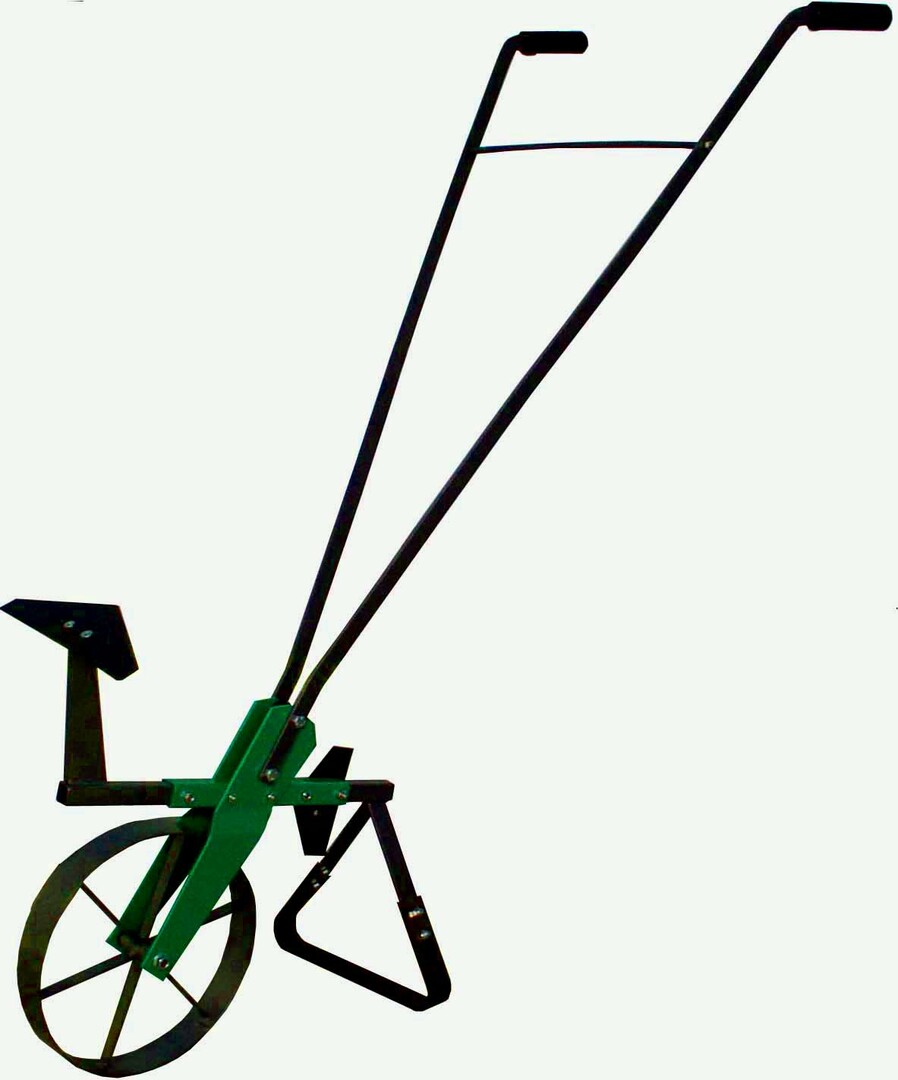
The collapsible cultivator of the Batrak model has a simple and effective design, allowing you to perform basic tasks in small areas and significantly speed up the work. The steering handle can be adjusted depending on the height of the worker, and can also be attached to the device with attachments. A frontal cutter with a high carbon steel blade is included with the device. The cost is about 2,500 - 2,800 rubles. Additionally, you can purchase attachments such as a hiller or furrow plow.
Price: ₽ 2 600
Don Gazon 126-1200
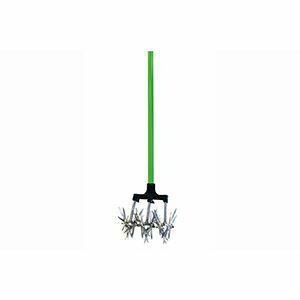
This model has a simpler structure even compared to the previous one. Allows you to perform agricultural work much faster than if you do not use specialized tools at all. Can be used in very small areas, or as an addition to a motorized cultivator to loosen corners and other hard-to-reach areas. Moreover, the price is quite low - 800 - 1,000 rubles.
Price: ₽ 878
Best Gasoline Light Tiller
Mantis 2T Kioritz 7921

The weight of the unit is quite small (11.3 kg), it is easy to operate, the processing width is 23 cm, which allows it to be used in narrow areas. Two-stroke engine, 1.1 l / s. The model has all the characteristics useful for its class, but it cannot be called cheap: it will cost from 37,000 to 42,000 rubles.
Price: ₽ 37 900
Best Gasoline Medium Cultivator
Hammer RT-65A
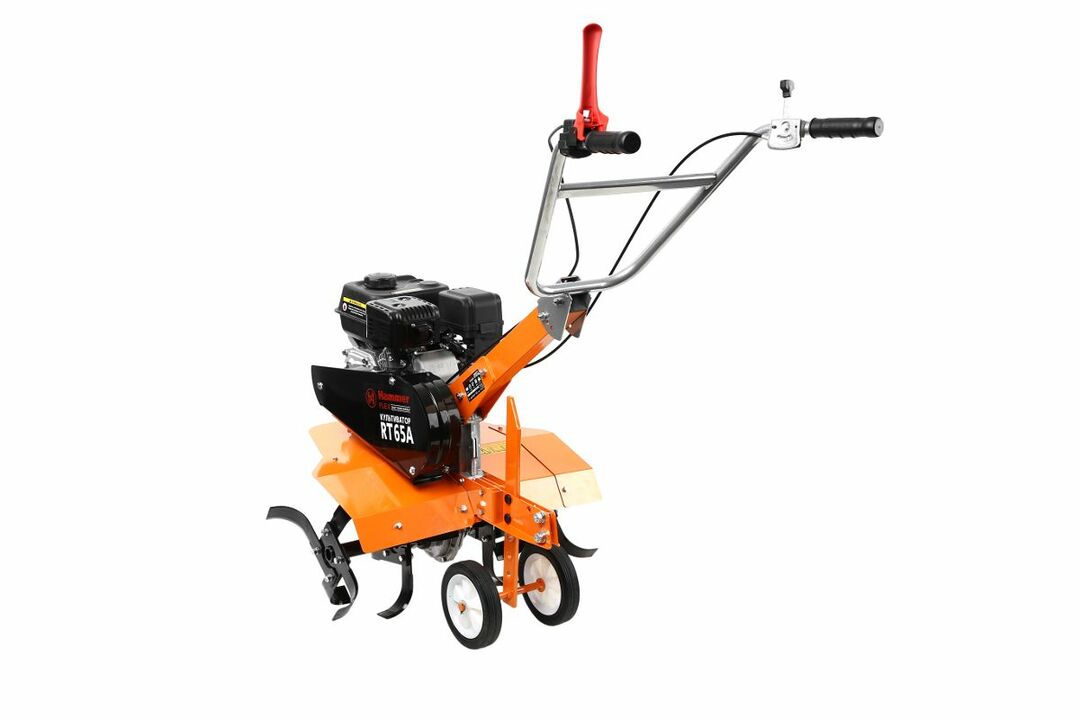
Designed for work on an area of up to a hectare - processing will be fast, you don't have to make a lot of effort: the device is able to confidently cope even with difficult soil. The weight is almost 60 kg, which brings the model closer to the heavy class, as well as the powerful 6 hp engine. Provided for the motor air cooling, it is equipped with a filter, due to which it is excluded the ingress of earth particles inside during operation. It is worth a little for its characteristics: 28,000 - 32,000.
Price: ₽ 29 999
Best Gasoline Heavy Cultivator
Husqvarna TF 338
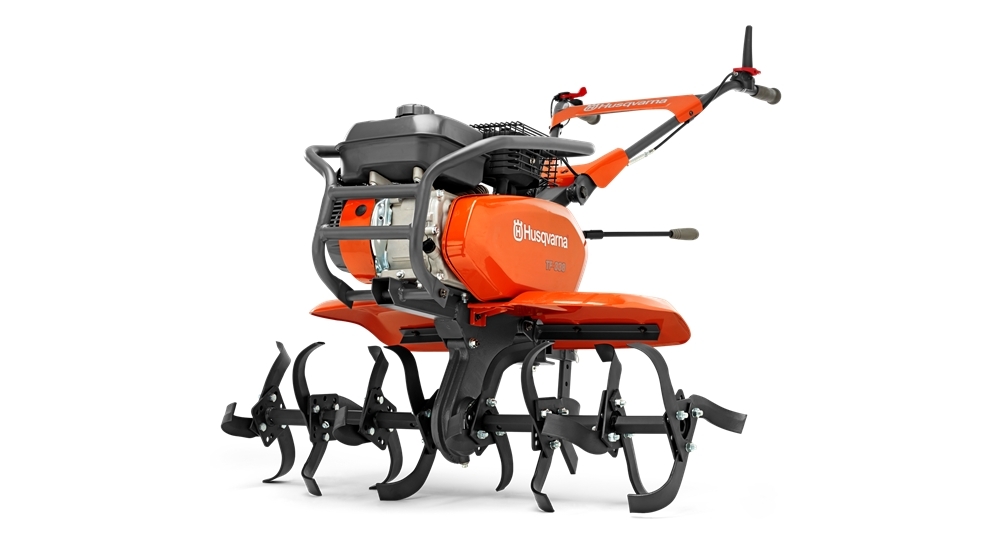
It is heavy even in comparison with most other heavy models (93 kg), which allows you to work on almost any ground. Allows you to manage even a large area in a short time. 4-stroke 4 hp engine equipped with a fuel tank designed for 4.8 liters. The cost is 42,000 - 48,000.
Price: ₽ 44 990
The best electric light cultivators
Champion EC1400

Designed for small areas, weighs only 11 kg and has a removable handle for portability. It has a 1 400 W motor, the rotational speed of the cutters is 280 rpm. It cultivates the soil to a depth of 21 cm, which is enough for constantly cultivated land, while the model is reliable and costs quite inexpensively - about 8,000 rubles.
Price: ₽ 6 897
Eurosystems Lucciola
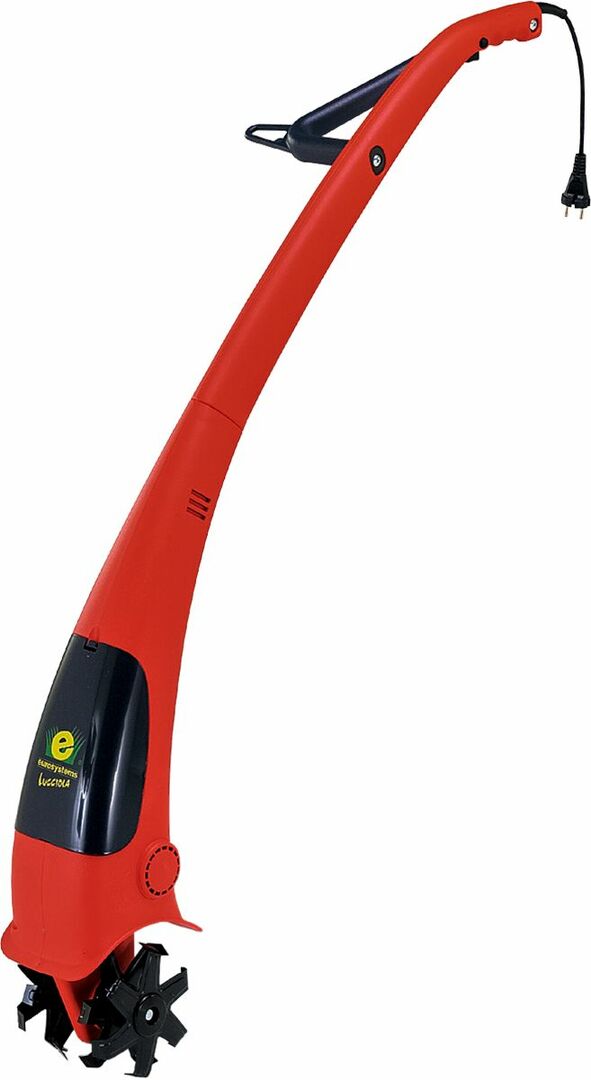
This miniature electric cultivator is specially designed for the cultivation of heavily cut areas - it has a working width of only 16 cm and a depth of 12 cm. The device is low-power (250 W) and light (4.8 kg), therefore it is used where really neat work is needed, and the soil must be prepared before using it. Eurosystems Lucciola costs 11,000 - 13,000 rubles.
Price: ₽ 11 105
Best Electric Medium Cultivator
GreenWorks G40TLK6
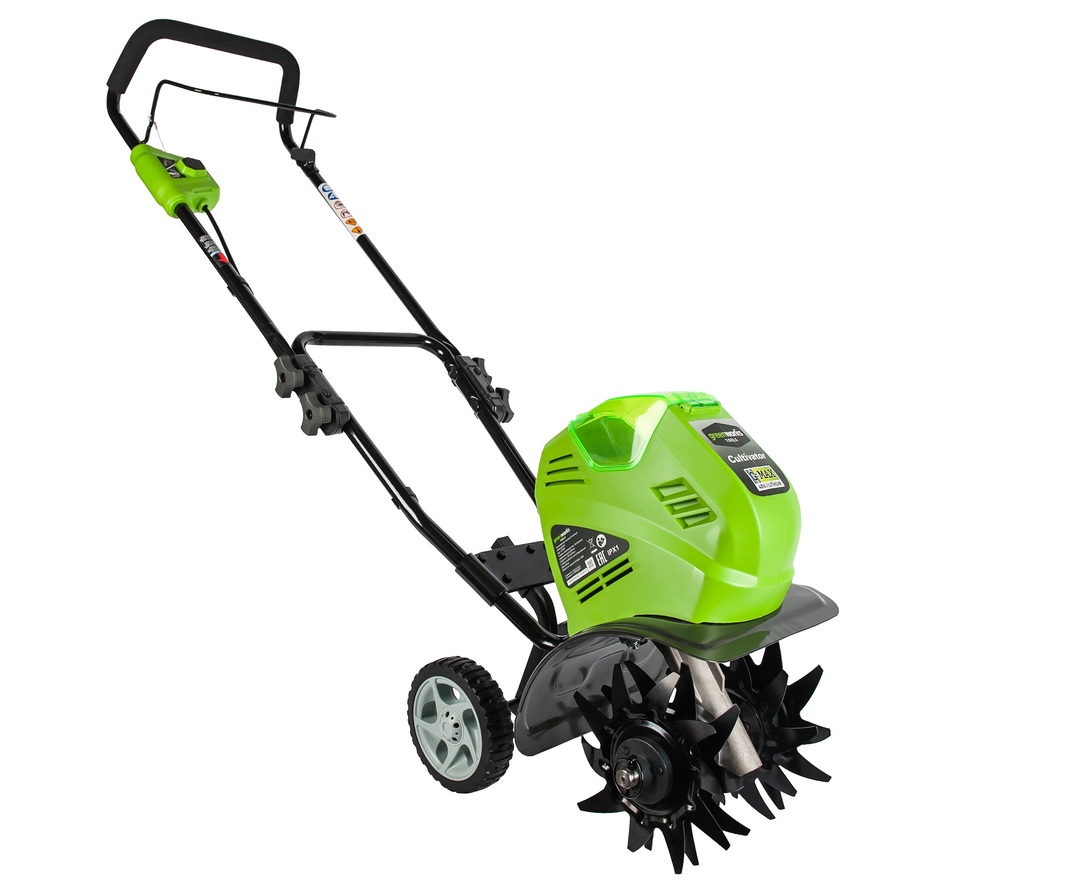
More serious device, but it is also intended for small areas. The width and depth of processing (25 and 20 cm, respectively) are quite sufficient for fast work with sufficiently soft soil. It costs approximately from 26,000 to 30,000 rubles - this price is justified by the good characteristics for a relatively small and mobile cultivator, as well as reliability and ease of use.
Price: ₽ 27 990
Comparative table of the best cultivators
| Name | Main characteristics | Price |
"Batrak" | It has a simple and efficient design, allowing you to perform basic tasks in small areas and significantly speed up the work. | ₽ 2 600 Buy |
Don Gazon 126-1200 | It has a simple device, it can be used in the presence of a very small area, or as an addition to a motorized cultivator. | ₽ 878 Buy |
Mantis 2T Kioritz 7921 | Weight 11.3 kg, working width 23 cm, two-stroke engine, 1.1 l / s. | ₽ 37 900Buy |
Hammer RT-65A | Weight almost 60 kg, powerful engine with 6 hp? equipped with a filter, due to which the ingress of earth particles inside during operation is excluded. | ₽ 29 999 Buy |
Husqvarna TF 338 | Weight 93 kg, power 4 hp, equipped with a fuel tank designed for 4.8 liters. | ₽ 44 990 Buy |
CHAMPION EC1400 | Weight 11 kg, removable handle, 1,400 W motor, rotational speed of the cutters - 280 rpm. | ₽ 6 897 Buy |
Eurosystems Lucciola | Coverage 16 cm, depth - 12 cm, power 250 W, weight 4.8 kg. | ₽ 11 105 Buy |
GreenWorks G40TLK6 | The width and depth of processing (25 and 20 cm, respectively) are quite sufficient for fast work with sufficiently soft soil. | ₽ 27 990 Buy |
Frequently asked Questions
Can you weed the beds with a motor-cultivator?
Yes, if its track is suitable for this, it is best to do it with the same device with which the landing was carried out.
Why does the cultivator go deeper into the ground?
The unit can go too deep for one of several reasons. Most often, the problem is in too dense soil - you need to let it dry out, or, if it has not been cultivated for a long time, cultivate it twice, first setting the smallest depth of the opener. The problem may also lie in a poorly adjusted opener or improperly installed cutters.



